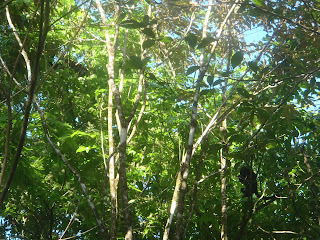Now that I have been back in Canada for a couple of weeks, I have had a little time to reflect on my experience over the past three and a half months. To sum it all up our internship coordinator, Larissa, has given us the task of filling out the follow four questions/statements with the first answer that pops into our heads...here it goes.
Five things that I enjoyed about my internship
experience are:
1. The people I met. Probably the most interesting people I have ever met.
2. Living simply
3. Being able to spend time with the community in San Francisco
4. Constant learning
5. Having a physically active job
1. The people I met. Probably the most interesting people I have ever met.
2. Living simply
3. Being able to spend time with the community in San Francisco
4. Constant learning
5. Having a physically active job
Five things that bothered me during my internship
experience are:
1. Homesickness – at first.
2. Lack of sleep
3. Bug bites
4. Being confined to one space for an extended period of time
5. Living and working in the same place - could be good and bad.
1. Homesickness – at first.
2. Lack of sleep
3. Bug bites
4. Being confined to one space for an extended period of time
5. Living and working in the same place - could be good and bad.
Five things I missed most about Canada/Toronto?
1. Family and friends
2. Hot water
3. The dry season – ie. not 200mm of rain every 3 days
4. Sushi
5. My cat (and now I sound like a crazy cat lady…)
1. Family and friends
2. Hot water
3. The dry season – ie. not 200mm of rain every 3 days
4. Sushi
5. My cat (and now I sound like a crazy cat lady…)
Five things I will miss from my host country?
1. The people I met at the station
2. The abundant wildlife
3. The natural beauty, especially the mountains
4. The simplicity of life
5. Rice and beans...OH AND Lizano sauce
1. The people I met at the station
2. The abundant wildlife
3. The natural beauty, especially the mountains
4. The simplicity of life
5. Rice and beans...OH AND Lizano sauce
More reasons why I miss Costa Rica...
 |
| This is who we were greeted by on morning census walks |
 |
| My new favourite thing. Why can't Toronto have an ocean? |
 |
| This view. |
 |
| And this view... |
 |
| And this bird! Male resplendent quetzal (Pharomachrus mocinno) |



























